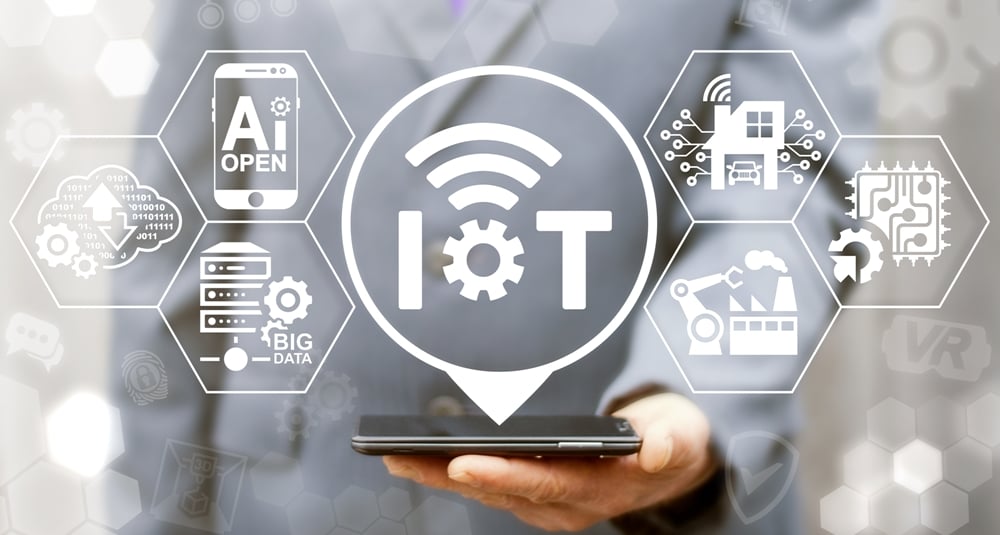
Catchphrases catch on, at least in principle. Take the Internet of Things or IoT. It’s easy for people to understand what it is. The internet, but for things—at home, at work and in cars, factories, fields and mines. IoT is catching on, but why hasn’t it caught on farther, faster? My theory is that fixed wires are holding IoT prisoner in homes, offices, factories, warehouses and industrial spaces around the globe. It’s time to cut loose.
You strategize, digitalize and implement changes according to plan. And still, your digital transformation project fails. You’re not alone. Seven out of 10 industry digitalization projects never get off the ground, studies say.
Yet have they really failed? Or were the projects designed to test digital technology for technology’s sake without addressing the underlying challenge? The failure, I believe, is in the hypothesis—not the test or the technology.
Let’s face it. Change isn’t easy—least of all, technological change. But bridging the gap between cool digital technology products and the way they impact our lives doesn’t have to be difficult. The faster we stakeholders come together to establish a unified language and can demonstrate ‘why’ digital technology should be used in the first place, the faster we will be able to transform how people work, live and play.
Moving from the wired platform of the now to a wireless future
IoT is here now. With mobile data traffic up 82 percent year-on-year and 5G uptake going even faster than anticipated, we can expect cellular IoT connections to follow suit. Today there are one billion cellular IoT connections in play. Five years from now, that number will triple to more than four billion.
But questions remain. How do we move industry into the now? How do we move from wired to wireless networks to capture the promise of trillions of dollars in value that industrial IoT (IIoT) will bring? We need to history to repeat itself. From connecting people on the move with mobile phones to connecting mobile industrial devices and machines with wireless networks.
 A universal language will advance IoT
A universal language will advance IoT
5G provides the foundation to realize the full potential of IoT.It provides higher reliability, lower latency and tougher built in security, yet, the lack of a common understanding or shared language throws up barriers to digital transformation success.
Take a public safety-first responder project I was involved in years ago. We stakeholders weren’t speaking the same language. The municipality referred to ‘edge’ as the data visible to dispatchers at its network operations center. The drone company defined ‘edge’ as the computing and AI capability running in real time on the drone. We considered ‘edge’ the transport and compression capabilities to determine response time in the cellular network and on the drone. Technically speaking, all these are edge components.
What was more important—and what we weren’t communicating—was the need for a reliable, low latency response to quickly put a first responder on the scene and to lower the potential casualty rate. Recognizing that need made it possible to pull together and move towards a common goal.
Whether saving lives, time or money, it’s critical to keep your eye on the prize and to communicate why digital transformation is a good thing. Speak a common language focused on results, not technology. Avoid technobabble, 3GPP jargon or exabyte-speak. Understand what people, typically IT and OT professionals, need. Then it’s easy to advance IoT.
The 4Cs: Overcoming IoT barriers
Through dozens of digital transformation projects, I have been struck by many an ‘aha’ moments. These are lessons, I believe, that differentiate IoT success from failure. It all boils down to four fundamental things required for digital transformation.
- Customer-centric design. From a custom running shoe and eyewear to custom food and medicine, people want products that meet their precise requirements. Done right, digital transformation projects that tailor anything to meet consumer needs generally succeed.
- Collaboration. Wireless and web-scale platforms have demonstrated the power of collaboration and open source development for mobile broadband. Let’s apply the same model for fast uptake to industrial IoT, recognizing that infrastructure and equipment for industries requires stronger private-public partnerships to deliver on the promise. Imagine the possibilities of democratizing industry data so it becomes possible to share. With improved industrial training models comes industrials improved ability to execute.
- Convenience. Determine what product, service or process takes up most of your customers’ time and then come up with ideas about how to make these easier and more convenient to use? Success depends on how well you identify a need and how well you meet that need. People value whatever makes their lives easier. Which is why convenience is the driving force that will make people and industries embrace new digital platforms and services.
- Connectivity. Connecting things can be overwhelming, especially when there are many actors trying to sell proprietary one-off solutions. It’s important to take stock of your company’s digital IQ and DNA, and select a connectivity solution that is open, inclusive and meets your needs today and tomorrow. Standardization and interoperability deliver future proofing your digital transformation projects.
Customization, collaboration, convenience and connectivity are what’s driving digital transformation today. I firmly believe that everything you do should be guided by these 4Cs. In the weeks and months ahead, I’ll be diving deeper into the 4Cs so stay tuned.
To find out more about the latest IoT insights, download the latest edition of Ericsson Mobility Report, released on June 18, 2019.
About the author: Kiva Allgood is head of IoT at Ericsson, where she’s responsible for scaling Ericsson’s IoT offerings and building strategic partnerships for connectivity across industries.
Edited by
Ken Briodagh





